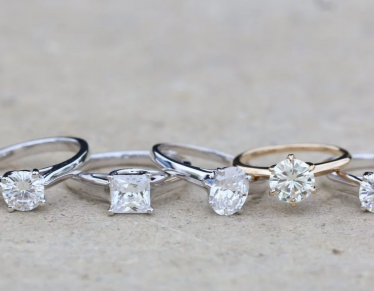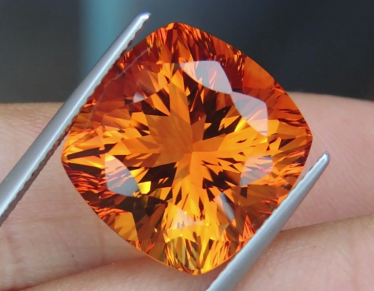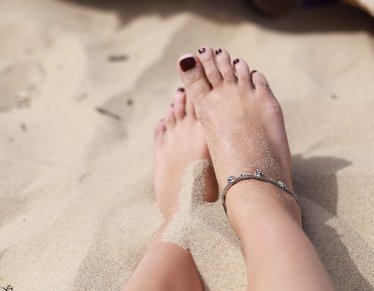We all know the beauty of a diamond. Girl’s best friend, right? They are certainly a popular gemstone, especially for engagement rings, but there is no denying their hefty price tag. Cubic zirconia, on the other hand, is a far less expensive option that has a similar appearance. Today we discuss cubic zirconia vs diamond.
You’ve all likely heard of cubic zirconia (or sometimes referred to just as CZ), but besides knowing that it is inexpensive, do you know anything else? What is cubic zirconia, how durable is it, is it high enough quality for jewelry that is worn every day? Are diamonds actually better, enough to justify the major price difference?
Today we will be making a full comparison of the two stones so that you can have a better understanding when going to purchase jewelry of your own (or for someone special in your life).
Defining Cubic Zirconia
You’ve likely seen cubic zirconia jewelry before, but have you ever actually considered what cubic zirconia is? After all, CZ does pretty closely resemble a diamond (we’ll talk about appearance in more detail later), but the cost is far far less.
Cubic zirconia is a synthetic gemstone that is the cubic crystalline form of zirconium dioxide. While all jewelry that is made with CZ will feature this synthetic version, cubic zirconia can be found naturally, but it is incredibly rare.
For that reason, only synthetic CZ is used in jewelry today. This is why the cost is consistently low, as you always see a synthetic stone vs. a real gemstone like a diamond.
Cubic zirconia can be completely colorless, and in many cases, is colorless (u,nless it has been manufactured to be a different color) and is usually free of any inclusions.
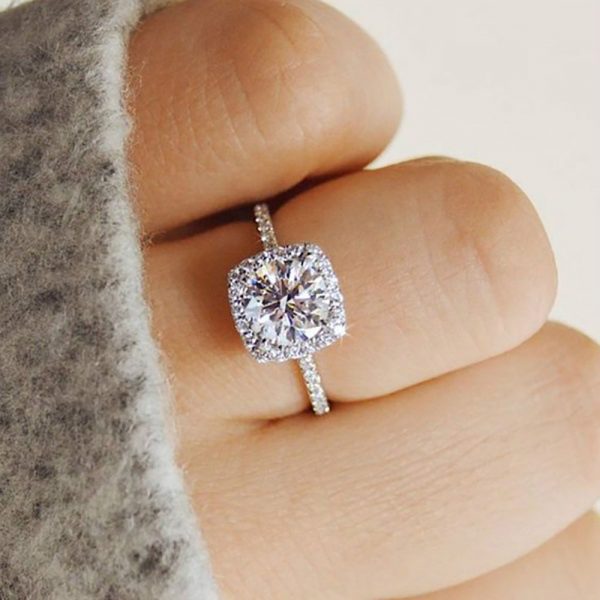
Real gemstones, including diamonds, will typically not be totally colorless or free of inclusions, or if they are, they will be incredibly expensive. This leads some people to believe that CZ stones look ‘fake’ as they tend to look too perfect, with no color or inclusion imperfections.
In terms of durability, cubic zirconia is given an 8 on the Mohs hardness scale (out of a possible 10). This is a fairly good score, although it will be more prone to wearing down or chipping – especially if you have a stone with sharp edges – they may dull down and become more rounded over time. Cubic zirconia will also get scratched over time, especially if you are wearing it every day.
In terms of brilliance, or how much sparkle the gemstone will have, cubic zirconia has a lower level of brilliance, as its refractive index is between 2.15-2.18. For comparison, the diamond refractive index is 2.42.
Essentially, this means that more light will pass through the cubic zirconia, leaving less light to refract back to your eyes, which is what you see as sparkle.
Comparing Cubic Zirconia vs Diamond
Now that you know more about cubic zirconia, you probably want a direct comparison with diamonds to really understand their similarities and differences.
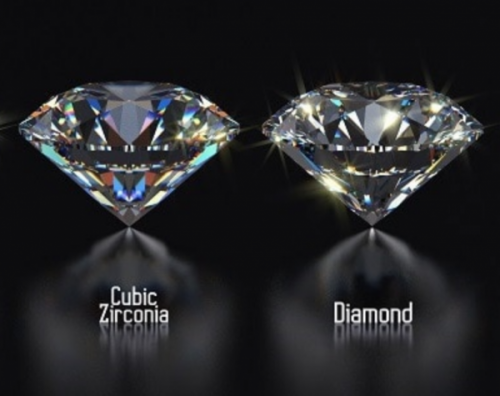
To help you out, we will be comparing the main qualities of both so that you can get a full understanding of the differences between these two stones:
✓ Appearance: Cubic zirconia is completely colorless and free of inclusions. The majority of diamonds you will find (minus incredibly rare, expensive ones) will have some color and some inclusions. With good quality diamonds, you cannot detect the color or inclusions with the naked eye, it is only detected under a microscope.
When looking at these stones under a light, you will find that a diamond will reflect the entire rainbow of colors, whereas cubic zirconia typically only reflects orange, and sometimes blue flashes of light.
✓ Brilliance: Diamonds are known for their brilliance, although this is impacted by the cut of the diamond. Certain cuts, like round cuts, offer superior brilliance, as opposed to other cuts like an emerald cut.
However, regardless of the cut, diamonds will always possess more brilliance than cubic zirconia because of their refractive index, which is higher in diamonds (2.42) than CZ (around 2.15-2.18). While cubic zirconia will look beautiful and be completely colorless and free of flaws, it will not bounce light and sparkle as a diamond will.
✓ Quality: Diamonds are high-quality gemstones, but their quality will range greatly based on their cut, color, clarity, and carat. On the other hand, since cubic zirconia is synthetic, the quality will essentially be the same across the board. The one main difference you will find is size. The appearance otherwise will pretty much stay consistent.
✓ Value/Cost: Diamonds are tremendously more valuable from a cost perspective. They are much more expensive and always will be, no matter the size.
While diamonds can easily cost thousands, you will find that cubic zirconia doesn’t even cost hundreds (unless you maybe get up into very large carat sizes).
✓ Durability: Diamonds are the hardest stone on Earth, with excellent durability. This is what makes them such a great choice for an engagement ring, as they can handle the wear and tear associated with everyday wear. Diamonds are given a 10/10 on the Mohs hardness scale, while cubic zirconia is given an 8/10. They have a good amount of durability, but not great.
Over time, they are likely to get scratched or chipped and even to become cloudy. However, they are still a good choice for certain jewelry pieces, perhaps that are not worn every day.
✓ Association: While we don’t think you should be concerned with what other people think, it’s important to note that many people think of cubic zirconia as a lesser, cheaper, stone that could never compare to a diamond. Many people may not know what cubic zirconia is, they are almost guaranteed to recognize the name and associate it with being a “fake diamond.” Diamonds will always have a superior association and identity.
This is in part because of marketing, but also due to the high cost of a diamond. Since it is more expensive, it’s therefore seen as more valuable (and from a cost perspective, it is.) However, the cost is not what is most important to everyone.
Making the Right Decision
So, how do you make the right decision? While diamonds are superior to cubic zirconia in nearly every way, the one area where they fall short is cost. Diamonds are incredibly expensive, and cubic zirconia is incredibly affordable.
Plus, keep in mind, cubic zirconia does look similar to diamonds! While they do lack the brilliance of a diamond, they are a gorgeous colorless stone and the perfect alternative to a diamond.
The budget will be a big consideration when making the right decision. If you are on a very limited budget, going with cubic zirconia is a great option. If you are considering an engagement ring specifically, lifestyle is also something that we would recommend you keep in mind.
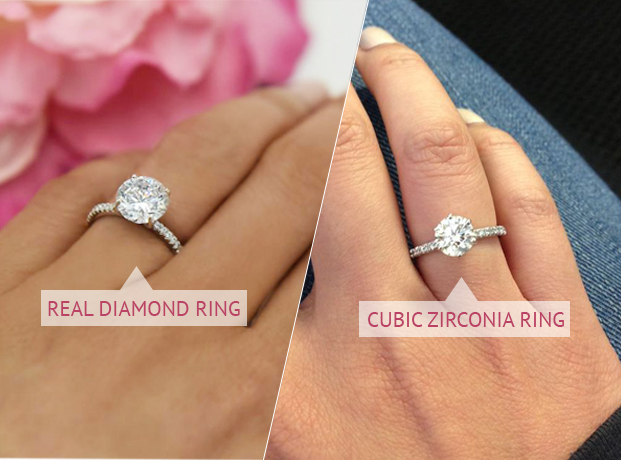
For example, some people cannot wear their engagement or wedding rings because of the work that they do. In this case, a cubic zirconia ring might be a great option since you are just wearing the ring on certain days, and on most days, you aren’t.
However, if you are someone who plans to wear your engagement ring every single day, we think that investing in a diamond is the right choice so that your ring will look beautiful for years to come.
If you are in search of a ring that has incredible brilliance, you really have no choice but to go with a diamond. However, keep in mind that while the diamond will cost more, you can save money by going for a lesser color and clarity rating.
As long as it looks good to the naked eye, it doesn’t matter what it looks like under a microscope. Don’t pay the price for a flawless or colorless diamond!
At the end of the day, it is your decision to make about which stone you select. It is good to know the differences between the two so that you do not get scammed into purchasing what you think is a diamond, but is just cubic zirconia.
Also, in terms of quality and durability, it is best to know all of the information so that you can make the right decision based on the type of jewelry you are buying. A pair of earrings that you will only wear occasionally, for example, may be a great option for cubic zirconia. An engagement ring or tennis bracelet that you will wear every day will last far longer if it has real diamonds.
Wrapping Up
While there are some similarities between cubic zirconia and a diamond, there are a lot of differences as well. Now that you have all of the important information, you can make the decision that is best for you!
Cubic zirconia will save you a lot of money but likely will not last as long. Diamonds are forever, but their cost will also stick with you for a long time.
What are your thoughts on diamonds? Are they worth the cost, or are you all about finding the best cost-effective alternative? Let us know!

